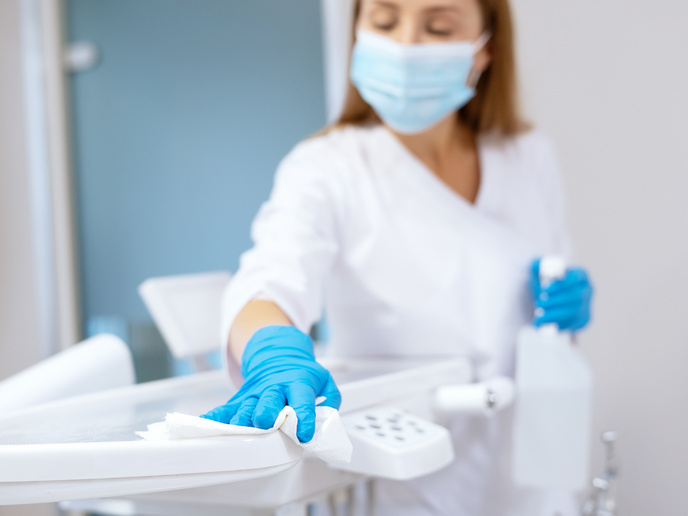Training network aims to break biofilm cycle
Bacteria are able to form communities – called biofilms – on all sorts of surfaces, including metals, plastics and natural materials. In fact, they are all around us. “The lifecycle of a biofilm generally consists of four main steps,” explains BREAK BIOFILMS(opens in new window) project coordinator Carmen Blanco from the University of Oviedo(opens in new window) in Spain. “These include: the adhesion of bacteria cells to surfaces; the formation of colonies; the maturation of biofilms; and then dispersion, when bacteria may colonise other surfaces.” Although there are a number of ‘good’ biofilms, used in industries such as wastewater treatment or bioremediation, many bacterial colonies are harmful to our health. For example, biofilms are responsible for about 80 % of human infections, and can cause severe problems in the agrifood sector. “Microbial biofilms are the primary cause of biofouling surfaces in both clinical and industrial settings,” adds Blanco. “They have a huge health and economic impact.”
Addressing harmful effects of biofilms
The BREAK BIOFILMS project, which was funded with the support of the Marie Skłodowska-Curie Actions(opens in new window) programme, sought to address the harmful effects that biofilms can have on our daily lives. To do this, the project brought together researchers from different fields, such as chemistry, nanomaterials, microbiology, biotechnology and chemical engineering. This training network – called ‘the Breakers’ – included six universities, nine companies, a research centre and a business and innovation centre. The concept was to train the next-generation researchers in multidisciplinary settings, develop integrated strategies for biofilm detection and destruction, and build on key innovations among partner labs.
Key strategies for tackling biofilms
The training network was based on four strategies: understanding biofilm formation; biofilm detection; biofilm destruction; and biofilm inhibition. “Biofilm formation is a very complex multistep process, in which a variety of biological and physicochemical processes take place,” says Blanco. “We employed cutting-edge technologies to explore these processes at a single-cell level and to provide a basis for understanding early-stage biofilm formation.” In terms of biofilm detection, the project focused on helping researchers to identify more rapid and sensitive techniques. “We need to know where the ‘enemy’ hides,” remarks Blanco. “Current approaches for detecting biofilms can be slow, and even take up to several days.” Once the biofilms are detected, efficient removal is required. The network looked not only for novel strategies for biofilm destruction, but also for greener and more sustainable disinfecting agents. Finally, in terms of biofilm inhibition, the network examined the potential of nano-antimicrobials as a novel approach to preventing the adhesion of bacteria in the first place. Food packaging materials for example could be developed to provide a controlled release of biocide metal ions.
Interdisciplinary experience to tackle societal needs
The experiences(opens in new window) gained through the network will better equip a new generation of scientists to tackle societal challenges related to bacterial biofilms. The project successfully brought together microbiologists, analytical chemists, materials scientists and engineers. “The path is now open to tackle key concerns such as antimicrobial resistance, safer food packages and antimicrobial surfaces, and even detecting and controlling biofilms in space,” says Blanco. Translating new ideas into practical solutions will be critical. “For this reason, entrepreneurship was a cornerstone of the training programme,” adds Blanco. “Scientists with entrepreneurial skills have the potential to create a new future.”







